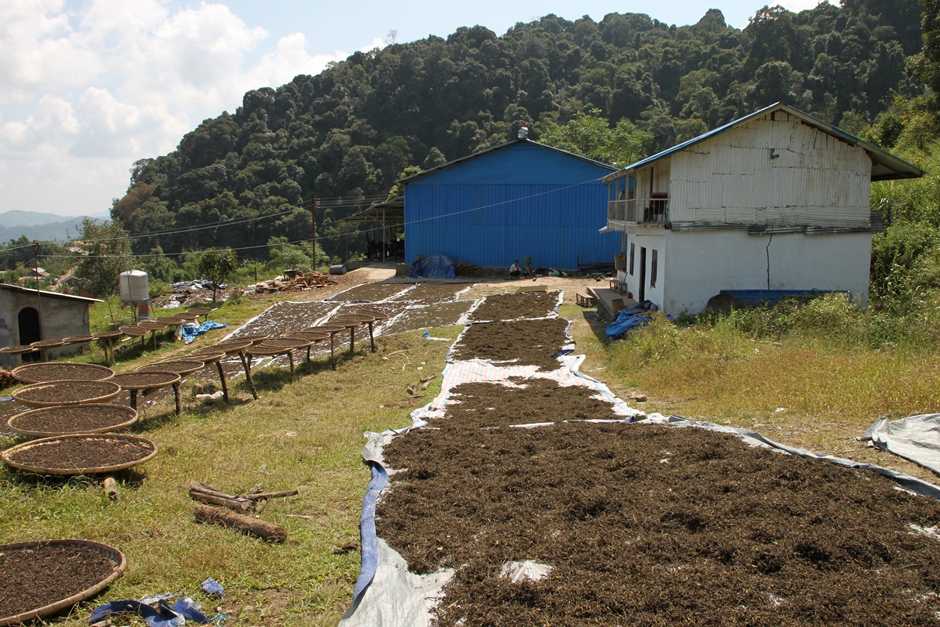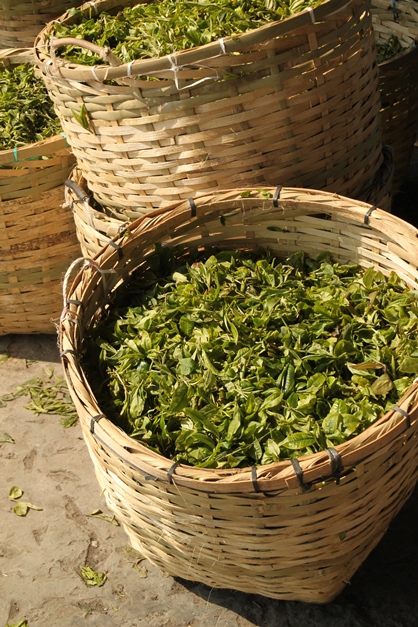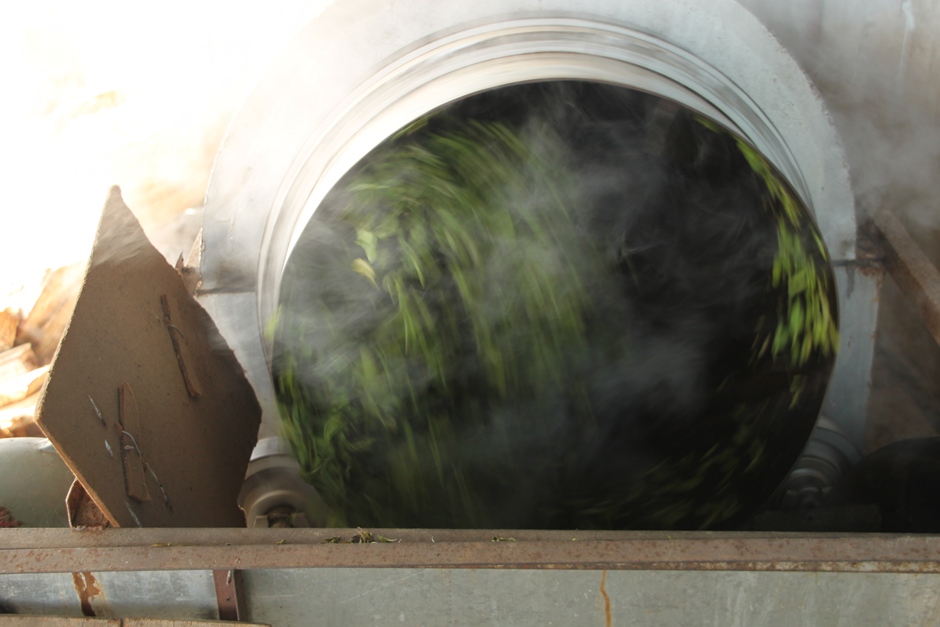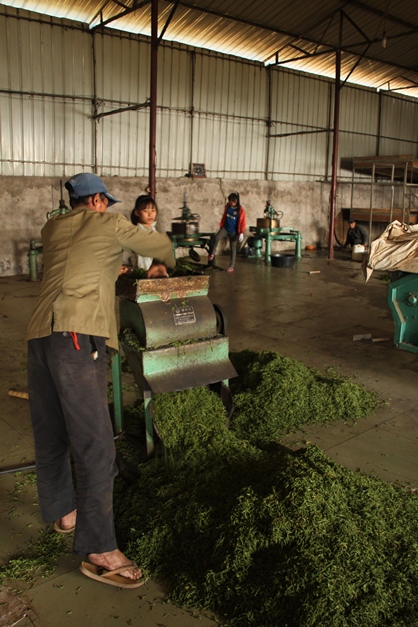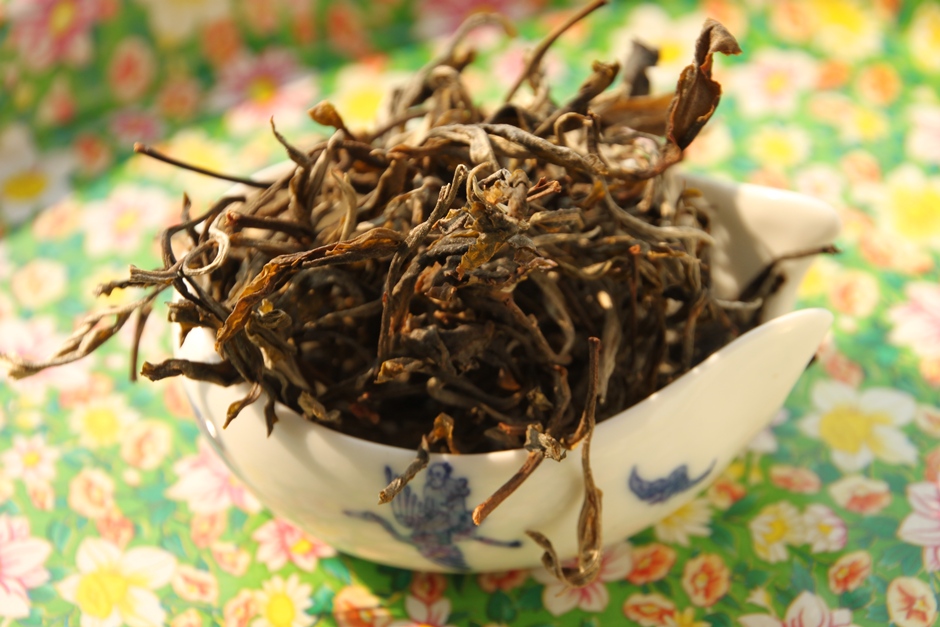

Two middle-size factories were built in Phongsali. The first one is Lao, and the second is Malaysian. Investors from Malaysia opened their factory in the best location by taking approximately one third of the area of the big city-stadium. The head of the factory and the chief technologist are the same person, Mr. Wang, who is originally from Guangxi province in China. This factory is closed right now, because of Mr. Wang and his staff have not come back yet from their home where they all went for the New Year holidays. We plan to describe that operation later, when the factory starts working again.
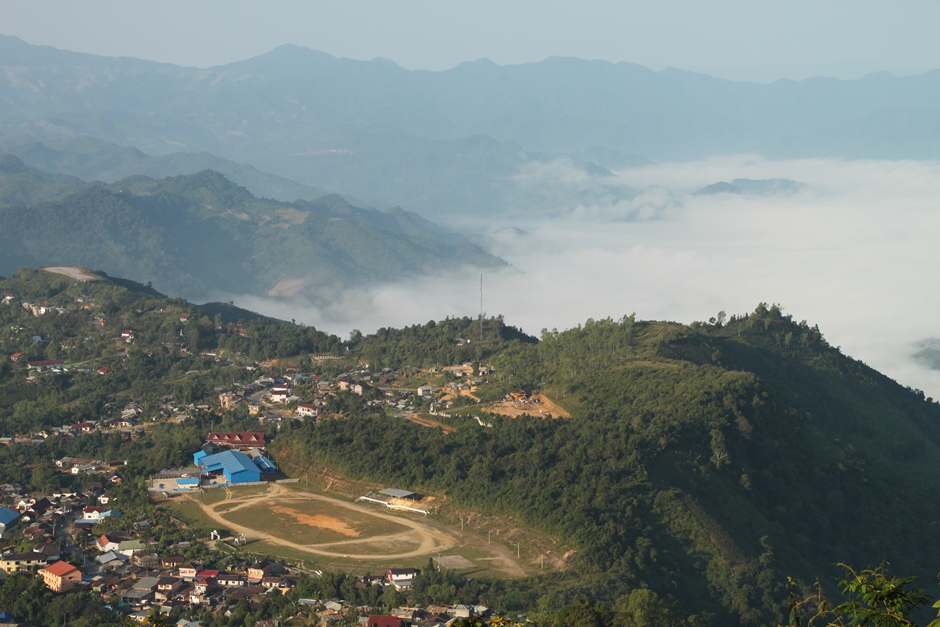
View of the city. The blue building near the stadium is the Malaysian-owned tea factory.
The director of the Lao factory is Mr. Kampan, is a middle-aged man, not very tall. When talking with him, we noticed that times of high energy and activity would flare up, and alternate with periods of extreme fatigue when he is almost apathetic. His two Chinese technologists are both from Yunnan province. Last year, this factory produced green tea, shai qing (Sheng Pu-erh), and a bit of red tea.
This is a Lao factory also painted blue.
Mr. Kampan's factory is located about three kilometers to the east of Phongsali on the way to Hutsa - a village on the river Nam Ou, where boats provide the main form of local transport. This year, the price of tea leaves increased significantly, and Mr. Kampan decided not to do any production of green tea.
It all starts with freshly picked tea leaves.
The tea manufacture in a factory is quite different form the home-based tea production. Instead of using a wok-pan, the first roasting is done inside of big spinning metal cylinder. Hot coals at the bottom produce the heat.
The spinning metal cylinder is heated by coal. This is the fastest way to do the primary roasting.
After roasting for the perfect amount of time, the tea is taken out of the cylinder and is ready for rolling.
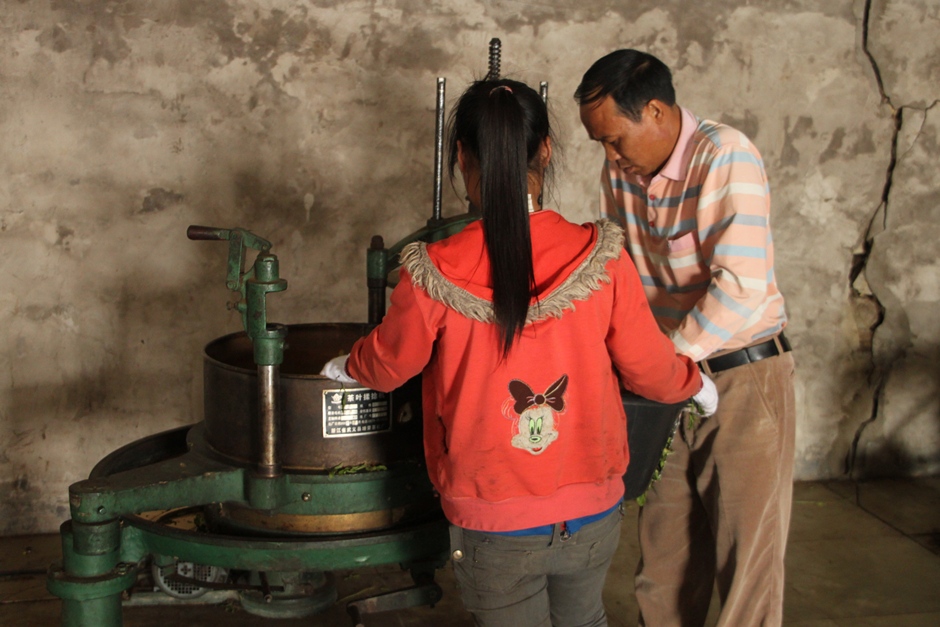
The Chinese technologist demonstrates how to work with the roller. Sheng tea runs in the roller for 10-12 minutes, red tea for 30-35 minutes.
A small machine next to the roller is used to "fluff" twisted tea, mimicking the handwork that leaves the tea less compacted. .
After fluffing, the tea is spread outdoors to dry in the sunshine.
The tea leaves are spread on plastic tarps to dry under the sun. The plastic-roofed shelters in the background are greenhouses built for the faster drying as well as for protection of tea leaves in case of unexpected rain.
At both of these two factories the lack of interest in creating high-quality tea is the biggest problem. The fresh-picked tea leaves could become an excellent product if treated with proper care. But Chinese dealers will buy the finished product at the set price this year, and not really care about the quality of the raw material or how it was processed. That is why the Lao factory uses only tea leaves from plantations which are 8-10 times cheaper than tea leaves from the large trees grown in old tea gardens.
The lunch-break is at the Lao factory.
Last year we were in Phongsali in March and again in September. Both times we tried all types of tea produced in both factories. Several teas were brought to Moscow where we tasted them together with our old tea friends. The general opinion was that the tea leaves are of very good quality but the roasting process could be better.
Sheng tea from the big old tea trees in the Ban Phayasy village.
When we begin our own small tea production in Phongsali, we hope to create high-quality organic tea which will be made by people who truly love tea and care about the subtleties of its taste. We will bring to that production a diverse international experience and deep appreciation for tea culture. This is our dream, and what we plan to do here in the "wild north" of Laos.
